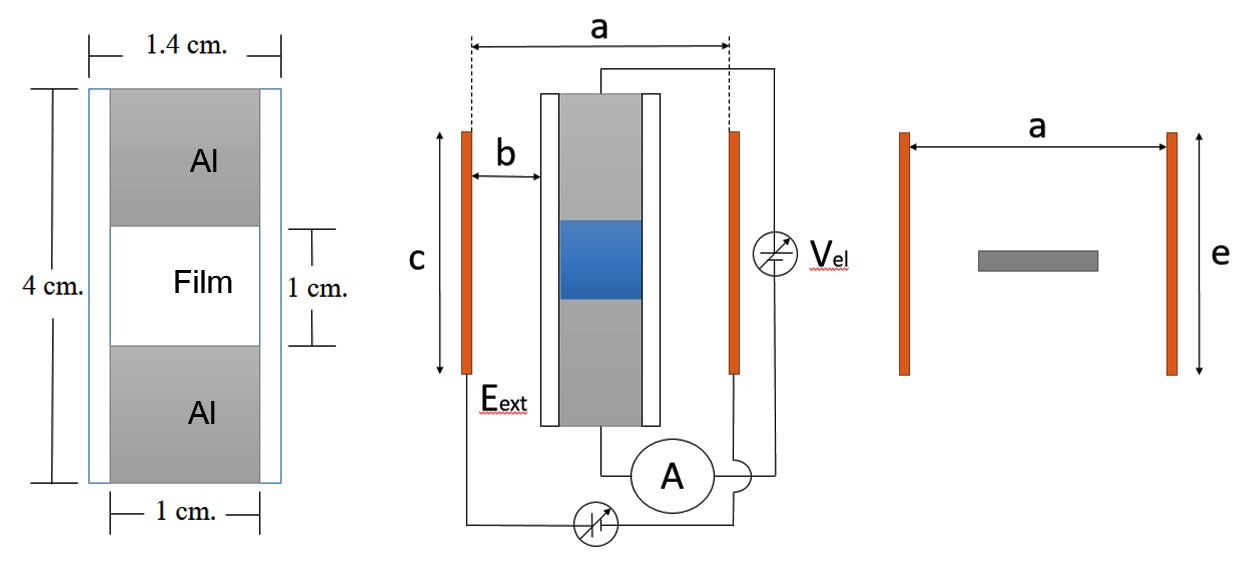การทดลองเรื่องมอเตอร์ฟิล์มของเหลว
Main Article Content
Abstract
Phasin Yaemsanguansak and Tula Jutarosaga
รับบทความ: 1 พฤศจิกายน 2559; ยอมรับตีพิมพ์: 20 ตุลาคม 2560
บทคัดย่อ
บทความนี้นำเสนอแนวทางการทดลองเพื่อแก้ไขโจทย์ปัญหาในหัวข้อเรื่อง "A Liquid Film Motor" ที่อาศัยหลักการของปรากฏการณ์อิเล็กโทรไฮโดรไดนามิกในฟิล์มของเหลว โดยการจ่ายสนามไฟฟ้าภายนอกในทิศทางตั้งฉากกับกระแสไฟฟ้าที่ไหลผ่านฟิล์มของเหลว โดยชุดทดลองประกอบด้วย 1) ฟิล์มบางของเหลวที่เป็นส่วนผสมระหว่างน้ำและกลีเซอรอล 2) แหล่งจ่ายสนามไฟฟ้าภายนอก (Eext) และ 3) แหล่งจ่ายศักย์ไฟฟ้า (Vel) เพื่อกำเนิดกระแสไฟฟ้า (Jel) ให้กับฟิล์มบางของเหลว โดยการทดลองแบ่งเป็น 3 ตอน ได้แก่ 1) การศึกษาสมบัติทางไฟฟ้าของฟิล์มสารละลายกลีเซอรอล 2) การศึกษาความสัมพันธ์ระหว่างสนามไฟฟ้าภายนอกกับความต่างศักย์ไฟฟ้าขณะที่ฟิล์มเริ่มหมุน และ 3) การศึกษาอิทธิพลของสนามไฟฟ้าภายนอกและความต่างศักย์ไฟฟ้าต่อความ เร็วเชิงมุมในการหมุนของฟิล์มของเหลว (ω) จากการทดลองพบว่า 1) กระแสไฟฟ้าที่ไหลผ่านฟิล์มของเหลว (Jel) มีความสัมพันธ์กับความต่างศักย์ไฟฟ้า (Vel) เป็นไปตามกฎของโอห์ม (Ohm’s law) 2) ความสัมพันธ์ระหว่างสนามไฟฟ้าภายนอก กับความต่างศักย์ไฟฟ้าที่ทำให้ฟิล์มสารละลายเริ่มเกิดการหมุนเป็นไปตามกฎการยกกำลัง และ 3) ความเร็วและทิศทางในการหมุนของฟิล์มสามารถควบคุมได้โดยการควบคุมสนามไฟฟ้าภายนอก (Eext) และความต่างศักย์ไฟฟ้าที่ให้กับฟิล์มของเหลว (Vel) คาดว่าผลการวิจัยชุดนี้สามารถนำไปประยุกต์ใช้ในการเรียนการสอนฟิสิกส์หรือเป็นแนวทางในการฝึกแก้ ปัญหาทางวิทยาศาสตร์สำหรับนักเรียนได้
คำสำคัญ: ค่าเริ่มต้น ปรากฏการณ์อิเล็กโทรไฮโดรไดนามิก ฟิล์มของเหลว มอเตอร์ฟิล์มของเหลว
Abstract
The article suggested an experimental setup for solving a problem of “a Liquid Film Motor” with the principle of electrodynamics by applying the external electric field perpendicular to the current through the liquid film. The experimental kit consists of 1) liquid film of glycerol and water solution, 2) a voltage generator for creating external electric field (Eext) and 3) a voltage generator (Vel) for supplying current (Jel) through the liquid. The experiment is divided into 3 sections: 1) a study of electrical properties of glycerol solution, 2) a study of the relationship between the external electric filed and the voltage when the liquid films start to rotate and 3) an influence of external electric field and voltage on the angular velocity of the liquid film (ω). From the study, 1) the current flows through the liquid (Jel) and the voltage (Vel) are in agreement with Ohm’s law, 2) the relationship between the external electric field and voltage when the film starts to rotate follows the power law, and 3) velocity and direction of the rotation can be controlled by controlling the external electric field (Eext) and voltage (Vel). This experimental setup can be applied for the teaching and learning in Physics or used as a guideline for practicing problem solving in science for students.
Keywords: Threshold, Electrohydrodynamics, Liquid film, Liquid film motor
Downloads
Article Details

This work is licensed under a Creative Commons Attribution-NonCommercial 4.0 International License.
References
Amjadi, A., Shirsavar, R., Radja, N. H., and Ejtehadi, M. R. (2009). A liquid film motor. Microfluid Nanofluid 6: 711–715.
Glycerine Producers’ Association. (1963). Physical Properties of Glycerine and Its Solutions. Retrieved from http://www.aciscience. org/docs/physical_properties_of_glycerine_and_its_solutions.pdf, November 1, 2016.
Institute for the Promotion of Teaching Science and Technology. STEM Education Thailand. Retrieved from http://www.stemed thailand.org, November 1, 2016.
Martchenko, L., Klishin, A., Namin, R. M., Swidwinski, S., Mamoika, A., and Piatrusa, S. (2015). Preparation to the Young Physicists’ Tournaments’ 2015. Retrieved from http://kit.ilyam.org/FDD_2015_IYPT_ Reference_kit.pdf, July 11, 2014
Shirsavar, R., Amjadi, A., Tonddast-Navaei, A., and Ejtehadi, M. R. (2011). Electrically rotating suspended films of polar liquids. Experiments in Fluids 50: 419–428.
Shiryaeva, E. V., Vladimirov, V. A., and Zhukov, M. Y. (2009). Theory of rotating electrohydrodynamics flows in a liquid film. Physical Review E 80: 041603-1–041603-15.
Wikipedia, the Free Encyclopedia. (n.d.). Nernst equation. Retrieved from http://th.wikipe dia.org/wiki/Nernst_equation, May 17, 2016.
Zhenyan, G. (2015). Experiment and Simulation on Liquid Film Motor and Its Application. Retrieved from http://msc. tsinghua.edu.cn:8090/lunwen/2015/8.pdf, November 1, 2016
